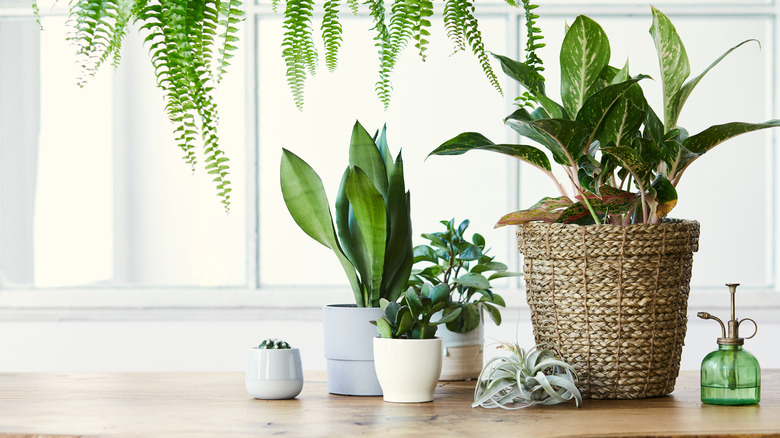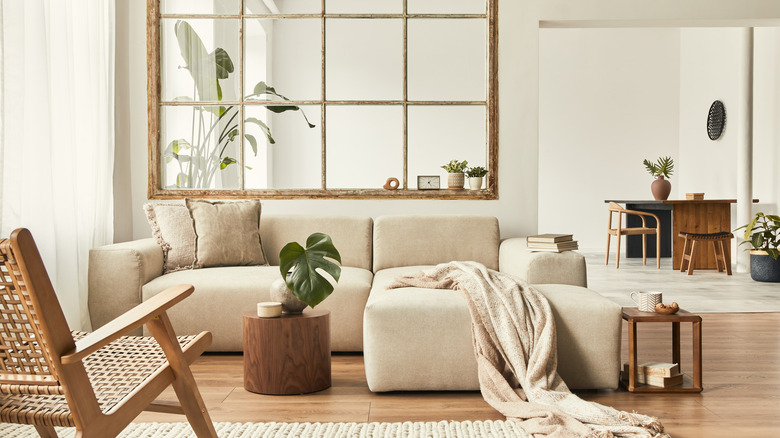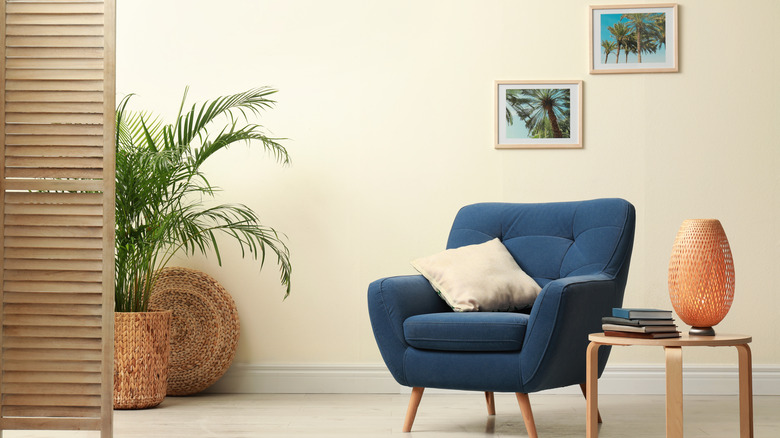Can Indoor Plants Actually Affect Your Home's Oxygen?
Indoor plants are a great way to improve your house, rooms, and office aesthetics, but there may be more to them than just that. Like humans, plant cells respire too, but it is different from breathing in humans, which involves utilizing oxygen and producing carbon dioxide.
During the day, plants carry out photosynthesis, which involves using light to make food. Plants require three main ingredients to make their food — water, sunlight, and carbon dioxide. When plants get water and carbon dioxide from the soil and atmosphere, they use it for photosynthesis, producing oxygen as a by-product, which humans and animals then utilize for respiration (via UCL).
Photosynthesis stops at night due to the lack of light. And this is when plants intake oxygen from the atmosphere and release carbon dioxide as a by-product. Considering how plants work and freshen up the air around, you might wonder if having indoor plants is a good idea for your home. After all, they do help with producing fresh oxygen, right?
Here's how plants affect indoor oxygen levels
The state of the air in our homes is something to think about. We often have chemical emissions from our kitchens, paint, furniture, etc., in our homes. These elements can be harmful to us. Some of the health hazards associated with indoor air pollution include throat, eye, and nose irritation; dizziness; fatigue; headaches; heart disease; and even cancer (via EPA). According to the Royal College of Physicians, indoor pollution leads to 99,000 deaths in Europe annually.
Now, that might be something to worry about. Naturally, the cure lies in ensuring that the air in your house is breathable, and this is where you might think that having plants around your bedroom and home might be a good idea. But how effective is it? It turns out, not much! A study published in the Journal of Exposure Science and Environmental Epidemiology in 2019 revealed that you might need around 93 plants in a single square foot of floor space to improve the ventilation quality of an office space, which indicates that plants might be not so effective when it comes to increasing oxygen levels in the house.
"This has been a common misconception for some time," revealed paper author and environmental engineer Michael Waring of Drexel University in Philadelphia (via Daily Mail). "Plants are great, but they don't actually clean indoor air quickly enough to have an effect on the air quality of your home or office environment."
Plants are much more than their oxygen-producing capabilites
Plants might not add much to the oxygen level at your home, but they might have a positive impact on your mental health, and it's got more to do with them just being potted around the house, looking pretty and soothing.
According to Dr. Rashmi Parmer, a psychiatrist with Community Psychiatry in Newark, California, "Urban green spaces have been linked with positive emotions and reduced stress levels" (via Verywell Mind). "Having an indoor plant may serve as a reminder of such positive memories, as well as the physical effects you might have experienced during those relaxing trips with nature."
Another psychiatrist at Community Psychiatry — Dr. Leela Magavi — added that "Like animals, houseplants can improve individuals' mood by allowing them to care for something other than themselves. This can create a sense of connectedness, which can alleviate feelings of anxiety and loneliness."
Turns out, it might not be a bad idea to have a few plants indoors, after all.



